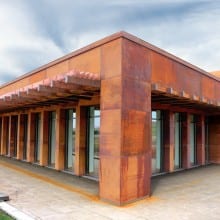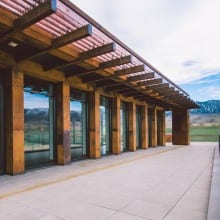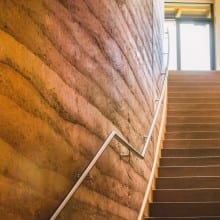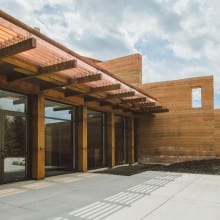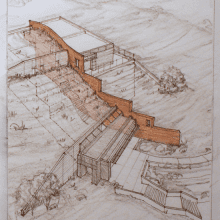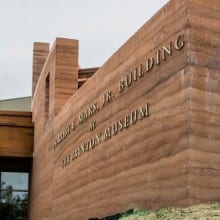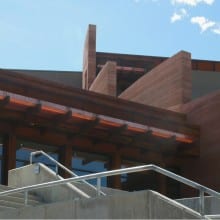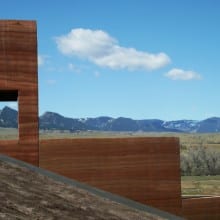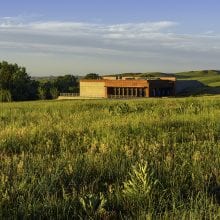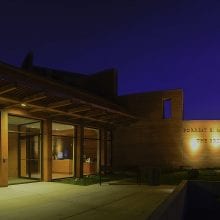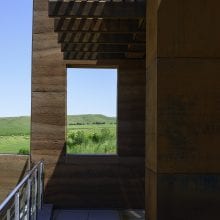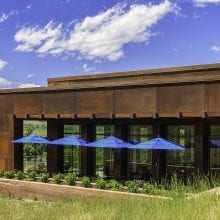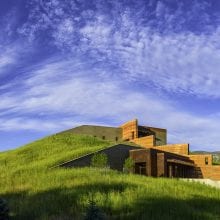
Architecture

Forrest E. Mars, Jr. Building Facts
Size: 24,000SF on three levels, quintupling the size of the former facility
Earth moved: 50,000 cubic yards or over 85 times the average (2,000 SF) house basement.
Height: At 51 feet,the Forrest E. Mars, Jr. Building includes the highest structural rammed earth wall in North America (as well as one of the longest at 210 feet).
Building Cost: $15.8 million
Local & Green: Design, engineering and general contracting provided by Wyoming firms. This highly energy efficient structure features green roofs and fantastic insulation, and is built into the hillside as not to distract from the Historic Brinton Ranch House as the focal point of the grounds.
Views of the Bighorn Mountains from the Top Floor Bistro: Absolutely amazing!
The Brinton Museum’s Structural Rammed Earth Wall: 2,000-Year Rammed Earth Wall. At 2’ thick, 209’ long, and 51’ tall overall, the Brinton Museum’s rammed earth wall is thelargest in North America. Because the world’s largest rammed earth construction – the Great Wall of China – has stood unprotected in the elements for more than 2,000 years, the Brinton Museum’s mostly protected rammed earth wall, incorporating modern strengthening elements, is expected to last at least two millennia. The inflection point where the north and south arcs meet is the heart of the wall – symbolically defining the Museum and bringing together the physical and spiritual nature of its collections.
Medicine Wheel Direction of the North Rammed Earth Arc: The north half of the museum’s rammed earth wall forms a massive arc 2’ thick x 130’ long x 51’ high. Aimed to roughly encompass the sacred Medicine Wheel 47 miles to the west-northwest in the Bighorn Mountains, this arc is symbolic of the relationship between the Brinton Museum’s Plains Indian collections and the sacred places of the Plains Indian cultures from which the collections originate.
Gallatin/Moncreiffe Ridge Direction of the South Rammed Earth Arc: The south half of the museum’s rammed earth wall forms a massive arc 2’ thick x 79’ long x 35’ high. Aimed to roughly encompass Moncreiffe Ridge 4 miles to the southeast where the Bighorn Mountains meet their foothills, this arc is symbolic of the relationship between the Brinton Museum’s Plains Indian collections and the early white settlers in the area who recognized the importance of collecting and preserving these artifacts.
To explore and learn more about the Forrest E. Mars, Jr. Building’s architecture, please call to schedule a special tour.

